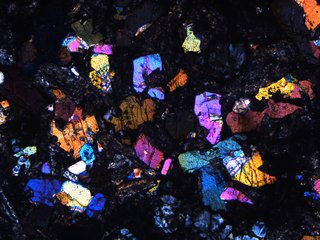In an international collaboration, Earth scientists at the University of Cologne and Freie Universität Berlin discovered that some magmas on Earth, which made their way through the deep terrestrial mantle and erupted at Earth’s surface, originate from mantle portions that contain remnants of Earth’s earliest crust. This ancient material must have been buried in a ‘graveyard’ of old and cold crust more than 4 billion years ago and survived since then, maybe since the giant impact event forming the Moon. This finding is unexpected because the plate tectonic regime of our planet progressively recycles crustal material via large-scale mantle convection at much smaller time scales. Therefore, it has been assumed that vestiges of early geological processes on Earth can only be found as analogues, on other terrestrial planets (Mercury, Venus, and Mars), asteroids, or the Moon. However, according to their study ‘Long-term preservation of Hadean protocrust in Earth’s mantle’, which has recently appeared in the Proceedings of the National Academy of Sciences (PNAS), magmatic rocks that erupted throughout Earth’s history can still carry signatures that provide detailed information about the nature of the first crust, its long-term preservation in a graveyard in the lower-most mantle, and its resurrection via younger volcanism.
For their study, the geologists investigated up to 3.55 billion years old rocks from southern Africa. The analysis of these rocks revealed small anomalies in the isotope composition of the element tungsten (W). The origin of these isotope anomalies, namely the relative abundance of 182W, relates to geological processes that must have occurred immediately after the formation of the Earth more than 4.5 billion years ago.
Model calculations by the authors show that the observed 182W isotope patterns are best explained by the recycling of Earth’s earliest crust into mantle material that ascends via plumes from the lower mantle to generate lavas erupting at Earth’s surface. Intriguingly, the study shows that similar isotope patterns can be observed in distinct types of modern volcanic rocks (ocean island basalts), which demonstrates that Earth’s earliest crust is still buried in the lowermost mantle.
‘We assume that the lower layers of the crust – or the roots of the primordial continents – became heavier than their surroundings due to a geological maturation process and therefore sank into the Earth’s underlying mantle. Similar to a lava lamp,’ geochemist Dr Jonas Tusch from the University of Cologne’s Institute of Geology and Mineralogy remarked. ‘This fascinating insight provides a geochemical fingerprint of the young Earth, allowing us to better understand how large continents formed over the history of our planet. It also explains how our current, oxygen-rich atmosphere evolved – setting the stage for the origin of complex life,’ Dr Elis Hoffmann of Freie Universität Berlin added.
The geochemical fingerprint of the early Earth can also be compared with findings about other planets obtained during space missions. For example, data from Mars missions and studies of Martian meteorites show that Mars still has a very old surface due to the lack of plate tectonics, and that its composition may correspond to that of the young Earth.
Media Contacts:
Dr Jonas Tusch
Institute of Geology and Mineralogy
j.tuschuni-koeln.de
+49 175 430 4060
Professor Dr Carsten Münker
Institute of Geology and Mineralogy
+49 221 470 3198
Press and Communications Team:
Mathias Martin
+49 221 470 1705
m.martinverw.uni-koeln.de
More information:
https://www.pnas.org/doi/full/10.1073/pnas.2120241119
Verantwortlich: Dr. Elisabeth Hoffmann – e.hoffmann@verw.uni-koeln.de

